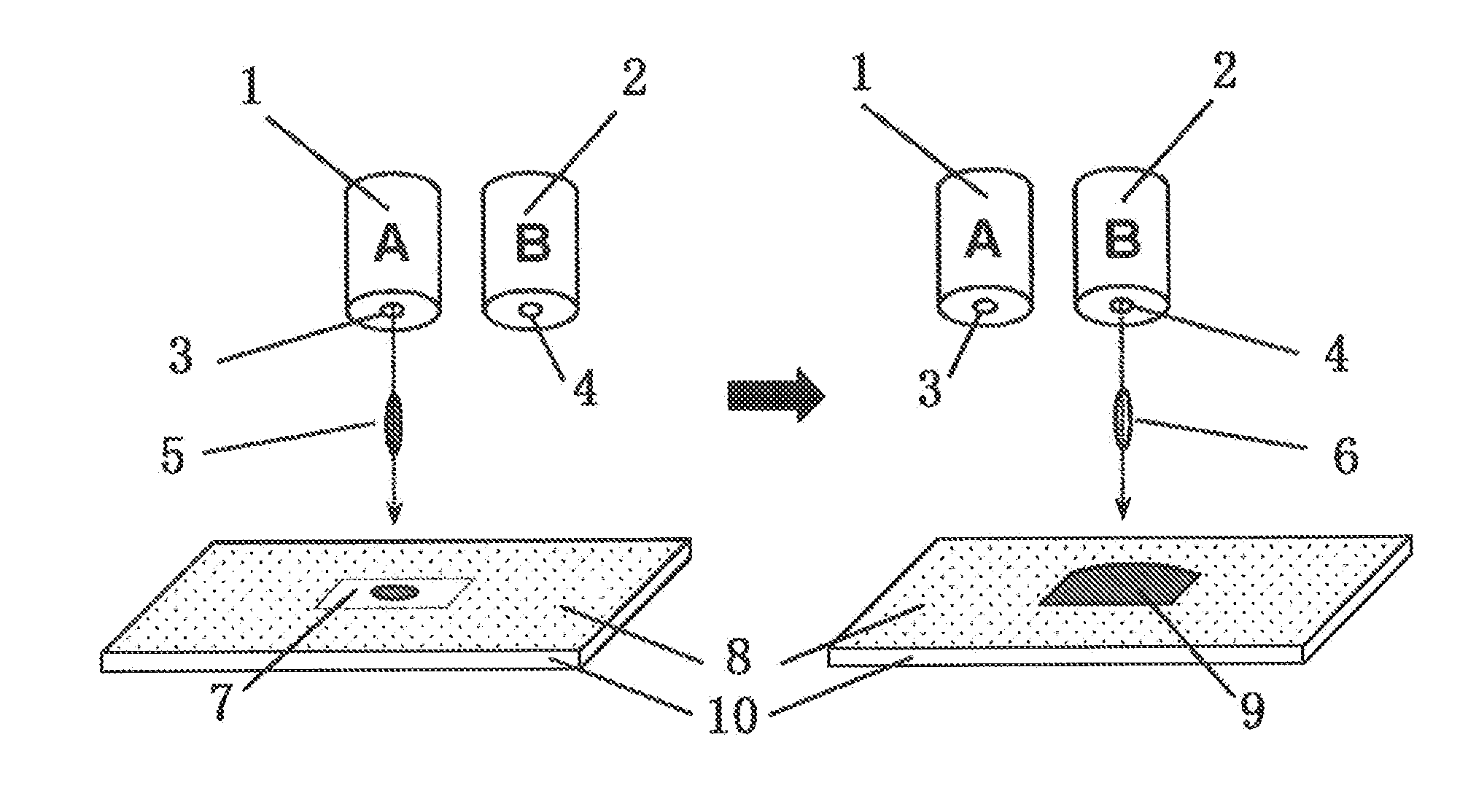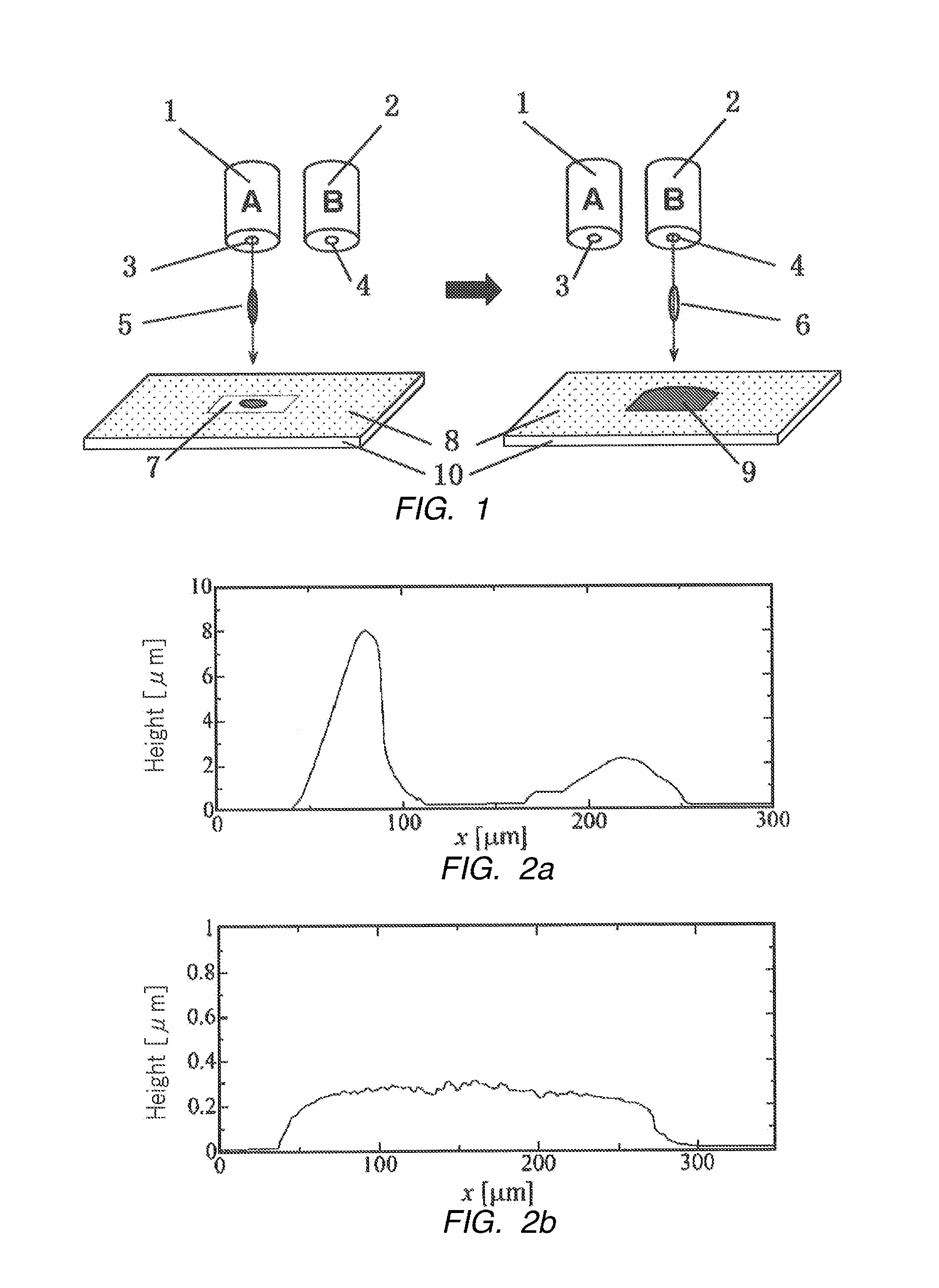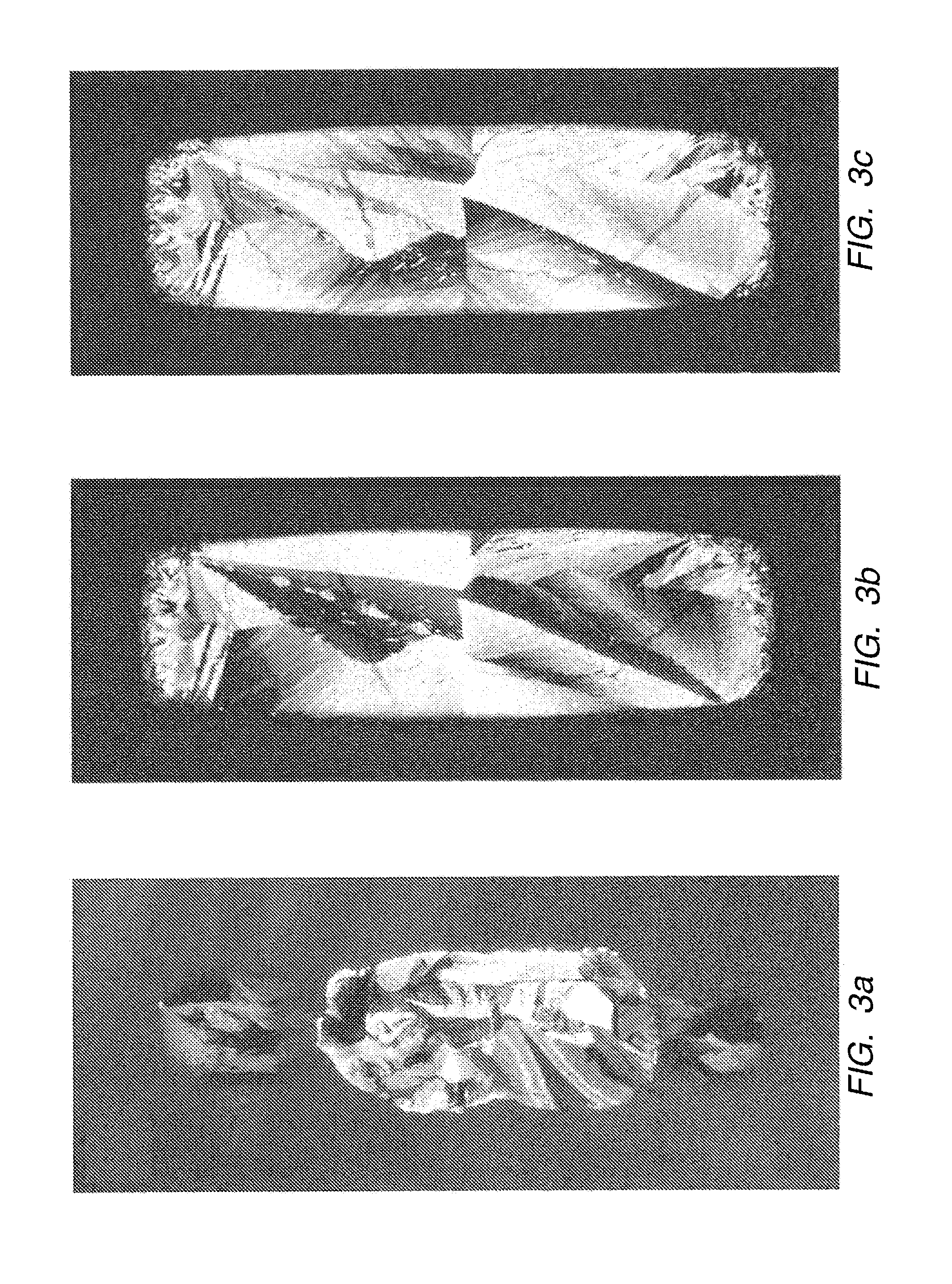Method for manufacturing organic semiconductor thin film and monocryastalline organic semiconductor thin film
- Summary
- Abstract
- Description
- Claims
- Application Information
AI Technical Summary
Benefits of technology
Problems solved by technology
Method used
Image
Examples
example 1
[0030]This example relates to manufacturing an organic semiconductor thin film. The example using 6,13-bistriisopropylsilylethynyl pentacene (hereinafter, abbreviated as “TIPS pentacene”) reported as a material forming an organic semiconductor layer to manufacture an organic thin film transistor is described in Example 1.
[0031]Chlorobenzene (CB) was used as a solvent for dissolving TIPS pentacene at a high concentration. N,N-dimethyl formamide (DMF) was prepared as a solvent for hardly dissolving TIPS pentacene. Thus, a TIPS pentacene thin film was manufactured by using an ink jet device with two ink jet heads capable of individually discharging.
[0032]Each of Materials, TIPS pentacene, CB and DMF is obtainable at low costs. A Refined TIPS pentacene was applied by re-crystallization method.
[0033]First, 36.3 mmol / l of TIPS pentacene solution of which concentration is used as an ink was prepared by dissolving TIPS pentacene (31 mg) (48.5 μmol: molecular weight 639) in 1.3 ml of chlorob...
example 2
[0049]This example relates to manufacturing a monocrystalline organic semiconductor thin film. In this case, C8-BTBT with high crystalline property was used as an organic material constituting an organic semiconductor layer. An organic semiconductor layer was formed using an ink formed by dissolving dissolving a high concentration of the above organic semiconductor and an ink of an organic solvent hardly dissolving the organic semiconductor by the double shot-ink jet printing method explained in example 1.
[0050]A region stored an ink dropped on a substrate by the ink jet printing method was defined by patterning by both hydrophilic (lipophilic) and hydrophobic treatments on the substrate surface. The region is surface-treated so that it has preliminarily designed shape to relatively quickly evaporate the solvent at a certain portion and to generate a seed crystal to form a monocrystalline organic semiconductor thin film.
[0051]The present invention will explain based upon the followi...
PUM
 Login to view more
Login to view more Abstract
Description
Claims
Application Information
 Login to view more
Login to view more - R&D Engineer
- R&D Manager
- IP Professional
- Industry Leading Data Capabilities
- Powerful AI technology
- Patent DNA Extraction
Browse by: Latest US Patents, China's latest patents, Technical Efficacy Thesaurus, Application Domain, Technology Topic.
© 2024 PatSnap. All rights reserved.Legal|Privacy policy|Modern Slavery Act Transparency Statement|Sitemap



